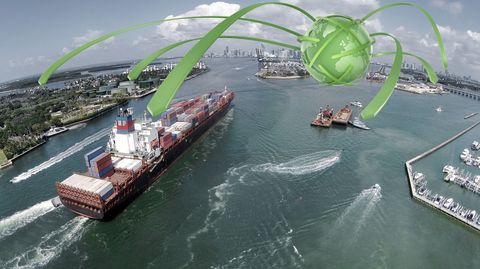Since the economic crisis of 2008, businesses dependent on international trade have been doing their best to cope with challenging market conditions, as global recovery from the recession continues to prove frustratingly sluggish.
World Trade Organization (WTO) data for 2016 showed a weak trade growth rate of just 1.3 per cent for the year, with economic activity slowing down across the board as major economies continue to adjust and reposition themselves. This unpredictability has proven problematic for businesses operating in all sectors.
However, better news may be just around the corner, with the WTO having recently predicted that more substantive signs of recovery will become apparent in 2017 and 2018, potentially creating new opportunities for traders worldwide. However, these prospects remain precarious, and will require global governments to adopt an open, forward-thinking approach to trade if they are to be fully realized.
The headline growth forecast
The global trade body has predicted that world merchandise trade volumes will grow by around 2.4 per cent in 2017, which would represent a significant improvement on last year. Looking ahead to 2018, further growth is anticipated, with an improvement in the range of 2.1 per cent to four per cent.
However, the WTO also noted that considerable uncertainty and downside risks continue to prevail, meaning that the 2017 growth figure could end up being anywhere in the range of 1.8 per cent to 3.6 per cent, depending on a range of factors.
Positive trends
The main driver of this improved trading outlook is an expected rise in global GDP, which is forecast to tick upwards from a 2.3 per cent growth rate in 2016 to 2.7 per cent this year. This will be followed by a 2.8 per cent rise in 2018.
Global economic growth has been unbalanced since the worst years of the financial crisis, but all regions of the world economy are expected to experience a synchronized upturn in 2017 for the first time in several years. In particular, a slowdown in emerging market economies were responsible for much of the sluggishness in 2016's trade growth, but these countries are expected to return to a modest degree of improvement in 2017.
With export orders and container shipping results having proven to be encouraging in the early months of the year, the WTO believes the targets it has set for the trade sector should be achievable.
Potential risks
However, a number of potential clouds are still looming on the horizon that could jeopardize the recovery - the most notable of which is the increasingly tentative approach that policymakers are taking to international trade.
The WTO states that future growth is contingent upon the right policy mix - with a focus on liberalized trade - being pursued, meaning that the current lack of clarity about international government action on monetary, fiscal and trade policies poses a significant risk.
Unexpected inflation, for example, could force central banks to tighten monetary policy, undercutting economic growth and trade, while uncertainty surrounding the UK's withdrawal from the European Union could also have an effect. Moreover, a potential resurgence of protectionist and restrictive trade policies would prove highly detrimental to global trade growth.
The need to defend the principle of open trade
In order to head off these risks and ensure that international trade figures can meet the most optimistic expectations over the next two years, the WTO is calling for government worldwide to renew their support of the principle of globalization and open trade, particular in the face of recent attacks on free trade deals by US president Donald Trump and others.
WTO director-general Roberto Azevedo acknowledged that greater trade liberalization can cause a degree of economic dislocation in certain communities, but noted that this should not cancel out its benefits in terms of growth, development and job creation, saying that politicians must embrace the idea of trade "as part of the solution to economic difficulties, not part of the problem".
He added: "Trade has the potential to strengthen global growth if the movement of goods and supply of services across borders remains largely unfettered. However, if policymakers attempt to address job losses at home with severe restrictions on imports, trade cannot help boost growth and may even constitute a drag on the recovery."






